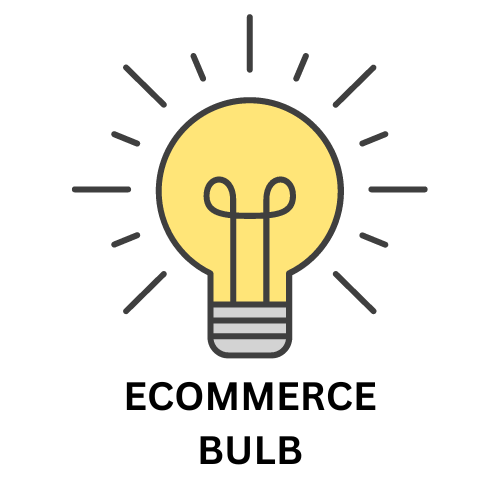In this blog post we are going to know what is Optimizely & how does it work, kinds of data that Optimizely collect and how it is beneficial to your eCommerce business.
What is Optimizely & How Does it Work?
Optimizely is a powerful A/B testing and personalization platform that helps businesses improve their websites and apps by testing different variations of elements and measuring their impact on user behavior and conversions.
How it works:
- Create an experiment: Define the goal of your experiment (e.g., increase conversions, improve user experience).
- Define variations: Create different versions of the element you want to test (e.g., different button colors, headlines, images).
- Target traffic: Decide which users will see each variation.
- Measure results: Track key metrics like clicks, conversions, and time on page.
- Analyze data: Use Optimizely’s analytics to identify the winning variation.
Key features of Optimizely:
- A/B testing: Compare two or more versions of a page or element.
- Multivariate testing: Test multiple elements at once.
- Personalization: Deliver personalized experiences based on user data.
- Visual editor: Easily create and edit variations without coding.
- Integrations: Integrate with other tools like Google Analytics and marketing automation platforms.
By using Optimizely, businesses can make data-driven decisions to improve their websites and apps and achieve their marketing goals.

What is the Purpose of Optimizely?

Optimizely is a Digital Experience Platform (DXP) designed to help businesses manage and optimize their digital presence and customer experiences across various touchpoints. Here are some key purposes and features of Optimizely:
- Content Management: Optimizely provides robust tools for managing website content, including on-page editing, post-scheduling, and collaborative content creation.
- E-Commerce Solutions: It offers comprehensive e-commerce capabilities, allowing businesses to manage products, pricing, inventory, and orders. It supports both B2B and B2C commerce with tailored features for each market.
- Personalization: Optimizely leverages real-time intelligence to drive personalized experiences at scale. This includes A/B testing, multivariate testing, and website personalization.
- Customer Data Platform: It helps businesses understand and anticipate customer intentions in real-time, enabling the creation of relevant and personalized messages.
- Integration: Optimizely supports integration with various other systems, including payment gateways and marketing automation tools, making it a versatile solution for digital marketing and e-commerce.
Overall, Optimizely aims to enhance the digital experience for customers by providing tools that allow businesses to create, manage, and optimize their digital content and commerce efficiently.
what is Optimizely CMS used for?

Optimizely CMS is a content management system (CMS) that combines the features of Optimizely’s A/B testing and personalization platform with a traditional CMS. It allows you to not only manage your website’s content but also experiment with different variations of elements and measure their impact on user behavior.
Key use cases for Optimizely CMS:
- A/B testing: Test different versions of your website’s content, layout, or design to improve user experience and conversions.
- Personalization: Deliver personalized content to different user segments based on their behavior, preferences, or demographics.
- Content management: Create, edit, and publish content for your website.
- Collaboration: Enable teams to collaborate on content creation and management.
- Analytics: Track website performance and user behavior to make data-driven decisions.
Optimizely CMS is particularly useful for businesses that want to continuously improve their websites and deliver personalized experiences to their users.

How does Optimizely Web Work?

Optimizely Web is a powerful A/B testing and personalization platform that helps you optimize your website for better performance. Here’s a breakdown of how it works:
- Create an Experiment: Define the goal of your experiment (e.g., increase conversions, improve user experience).
- Define Variations: Create different versions of the element you want to test (e.g., different button colors, headlines, images).
- Target Traffic: Decide which users will see each variation. You can target based on various criteria, such as demographics, behavior, or device type.
- Measure Results: Track key metrics like clicks, conversions, and time on page to analyze the performance of each variation.
- Analyze Data: Use Optimizely’s analytics tools to identify the winning variation and make data-driven decisions.
Optimizely Web provides a visual editor that makes it easy to create and edit variations without coding. You can also use Optimizely’s integration with other tools like Google Analytics to get a more comprehensive view of your website’s performance.

What Data does Optimizely Collect?

Optimizely collects data to help you measure the performance of your experiments and make data-driven decisions. This data typically includes:
- User behavior: Information about how users interact with your website, such as clicks, page views, and time on page.
- Conversion data: Data related to specific goals or actions you want users to take, such as purchases, sign-ups, or form submissions.
- Experiment data: Information about the variations you’ve created and how they’ve performed.
- Device and browser information: Data about the devices and browsers users are using to access your website.
- Geographic data: Information about the location of your users.
Optimizely uses this data to calculate statistics, generate reports, and provide insights into your website’s performance.
It’s important to note that Optimizely is committed to protecting user privacy and complies with relevant data protection regulations.



Leave a Reply